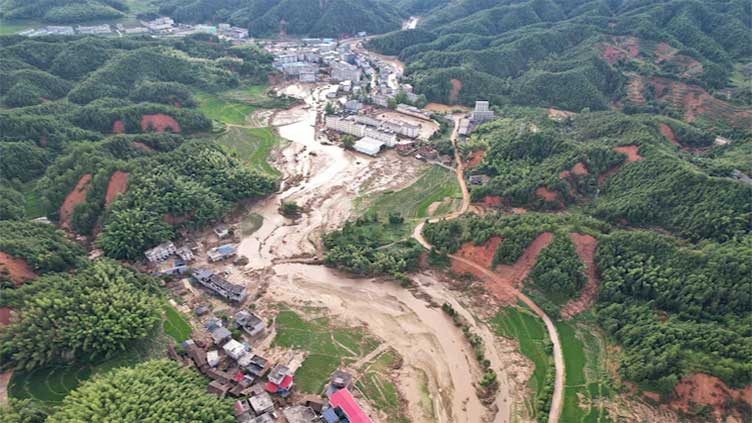Rescuers in China race to find the missing, seal dykes after deadly floods

World
Mountainous terrain and dense forests present challenges for the rescuers, officials said
BEIJING (Reuters) – Rescuers in China scrambled on Friday to locate dozens of people still missing a week after the year's most powerful typhoon roared into the southern province of Hunan, while emergency workers rushed to seal breached dykes on swollen rivers.
Even before Typhoon Gaemi hit on July 25, China was roiled by months of extreme weather that pummelled southern provinces with record rain and parched northern regions with heat waves. Weather officials are warning of more harsh weather in August.
The city of Zixing took the brunt of the typhoon in Hunan, lashed by 673.9 mm (26.5 inches) of rain over 24 hours, local officials told a press conference, or the equivalent of a quarter of its average annual rainfall.
The most powerful typhoon to hit China this year, Gaemi has killed 30 residents of the city, with 35 missing, local officials said at a press conference on Friday.
"Typhoon Gaemi brought great damage to Zixing," said provincial disaster prevention official Xiao Yingbin. "It was a very serious natural disaster."
Power supply was knocked out in 149 villages and communications cut in 78, while 1,641 houses were destroyed and 1,345 sections of road collapsed, one official said.
About 118,000 residents of Zixing, or a third of its population, have been affected, and about 13,800 hectares (34,100 acres) of crops were damaged, the official added.
Rescuers must make every effort to find the missing, restore infrastructure and guard against disasters such as landslides, China's second-most senior official, Premier Li Qiang, urged on Thursday during a visit to the city.
Mountainous terrain and dense forests present challenges for the rescuers, officials said, as they have been forced to walk to the hardest-hit areas, cut off by road collapses.
Supplies had to be air-dropped in some places, said local emergency management official Cao Zhongsheng.
ECONOMIC IMPACT
Across Hunan province, the rains have affected 1.15 million people, with direct economic losses of 6.13 billion yuan ($849 million).
Emergency workers rushed this week to seal a breached dyke on the Juanshui River, with two other dyke breaches reported on July 28.
Extreme weather crimped China's factory operations in July while high temperatures and floods hobbled the construction sector, official data showed this week, after last month's contraction in manufacturing activity.
July was China's hottest month in modern history, mirroring record high temperatures elsewhere in the world fuelled by climate change.
More harsh weather is in store for China in August, Jia Xiaolong, deputy head of the National Climate Center, said on Thursday, with many regions expected to get more rain than in corresponding periods of previous years.
Up to three typhoons could hit China this month, he added.
Drought might hit the middle and lower reaches of the Yangtze River in central China, Jia added, calling for measures such as cloudseeding to ensure crops grow.
Visiting the central province of Henan this week, Vice Premier Liu Guozhong called for efforts to limit damage to farm output from torrential rain and floods and ensure a bumper autumn harvest.
Henan, known as China's granary, grows about one-third of its wheat.



